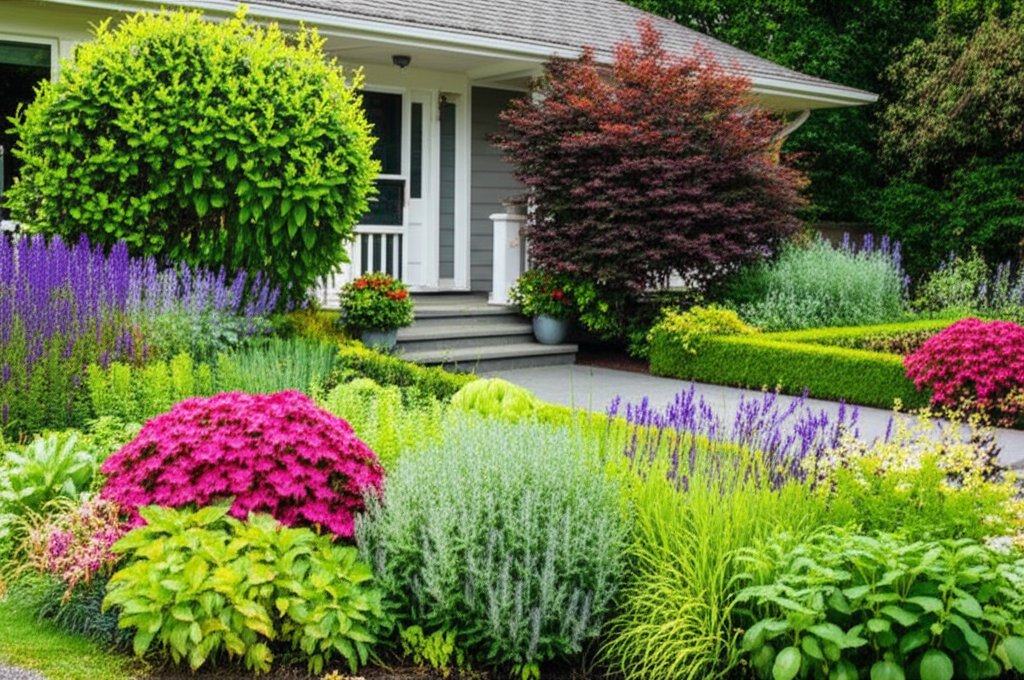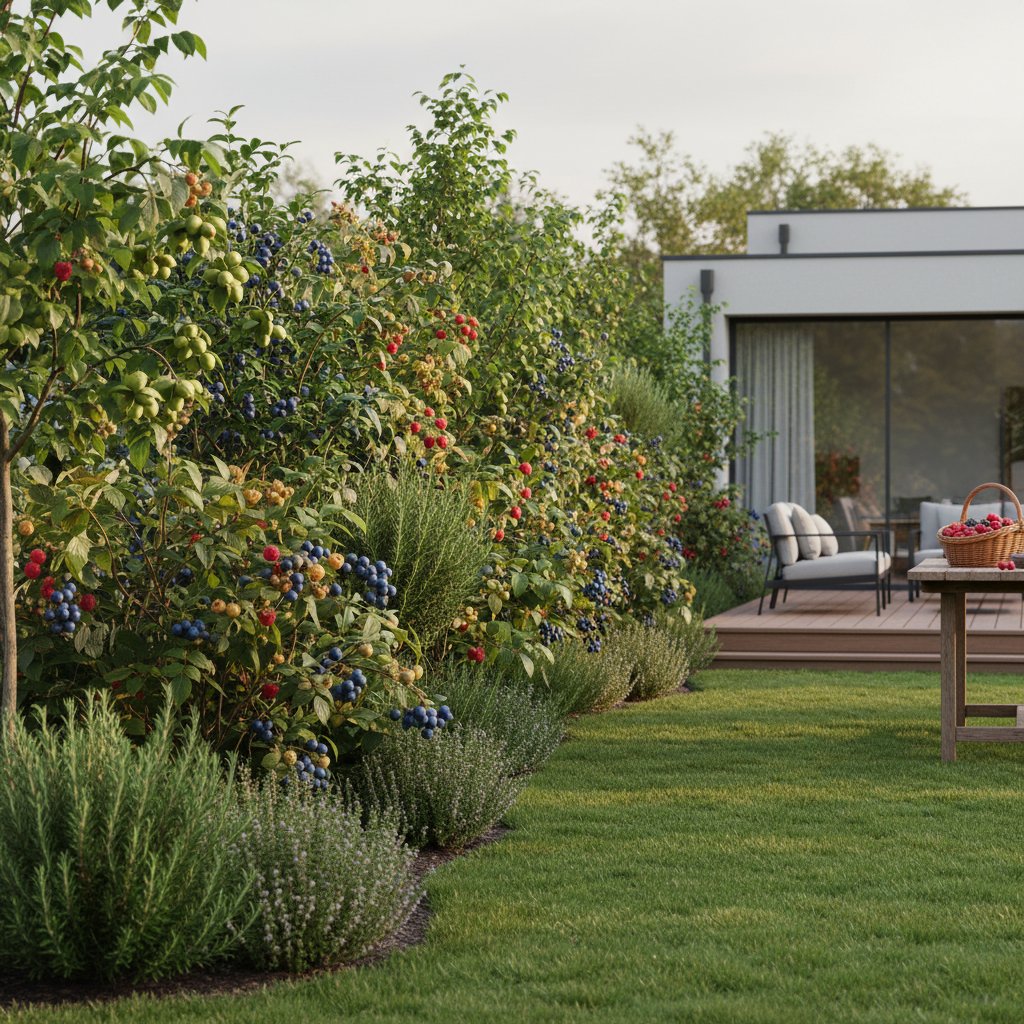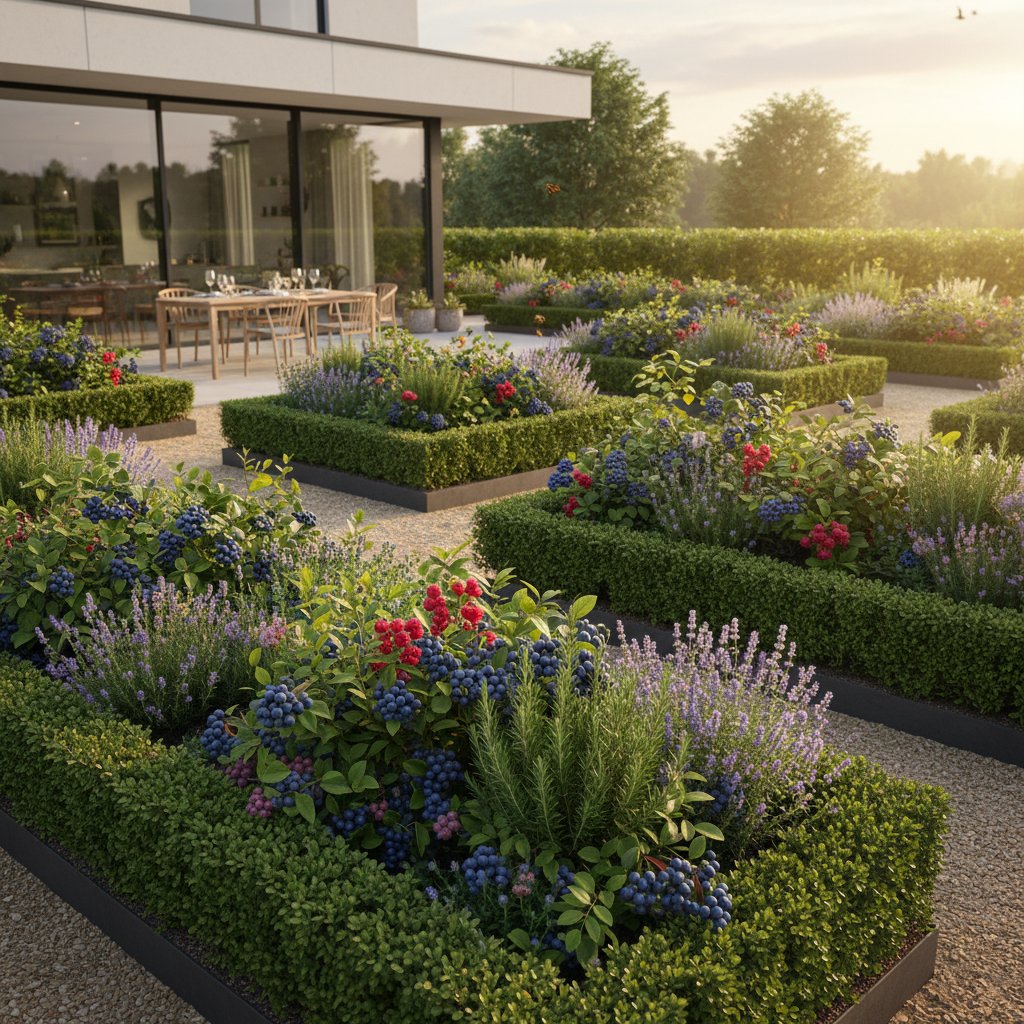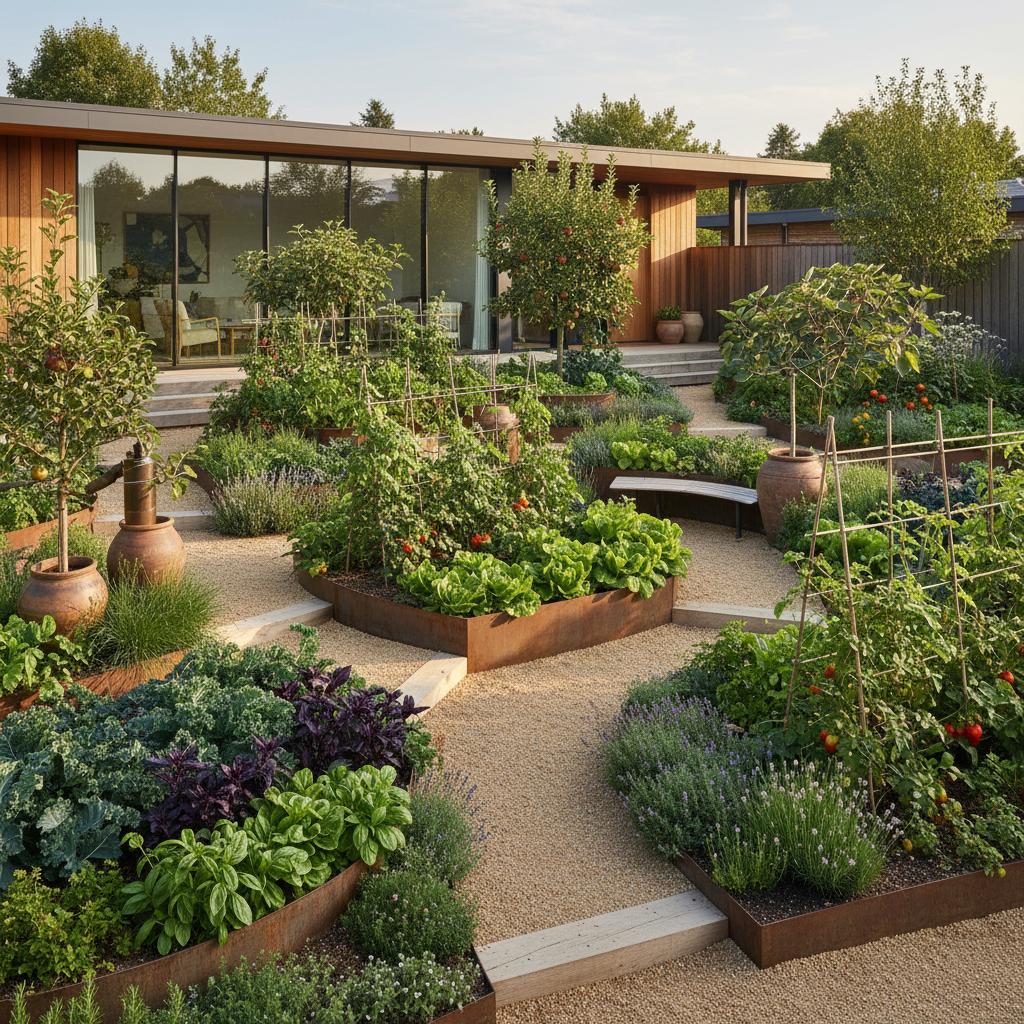Edible Landscaping: Grow Food in Your Front Yard
Edible landscaping combines the beauty of ornamental plants with the practicality of growing food. Instead of separating your vegetable garden from your front yard, you blend fruit, herbs, and vegetables into your landscape design. The result is a yard that looks attractive, supports pollinators, and provides fresh produce right outside your door.
You do not need to sacrifice curb appeal for functionality. With careful planning, you can create a space that looks polished and productive at the same time.
What Edible Landscaping Means
Edible landscaping, sometimes called foodscaping, replaces traditional ornamentals with plants that look good and taste good. You still have structure, color, and texture, but your plants also serve a purpose beyond decoration.
Instead of boxwoods, you might plant blueberry bushes. Instead of annual flowers, you could try bright chard or colorful kale. A small tree that once offered shade can become a dwarf apple or fig tree. The goal is to design a space that feels like a garden yet functions as a landscape.
Why More Homeowners Are Choosing Foodscaping
Several reasons make edible landscaping appealing.
- Food prices and freshness: Growing even a few vegetables can lower grocery costs while giving you fresher produce.
- Environmental benefits: Edible plants reduce lawn space, which cuts back on mowing, fertilizers, and water use.
- Pollinators: Many edible plants, like herbs and berries, attract bees and butterflies.
- Curb appeal: A well-planned edible landscape looks intentional, not messy. With attention to color and spacing, it can outperform a standard lawn in visual interest.
Planning Your Edible Front Yard
Good design is the difference between a patchy garden and a cohesive landscape. Begin by evaluating your site.
Sun and Soil
Most edible plants need at least six hours of full sun each day. Observe your yard at different times of day to see where sunlight falls. South-facing areas usually get the most light, while north-facing spots may be better for herbs or greens that tolerate partial shade.
Check your soil texture and drainage. Sandy soil drains quickly, while clay soil holds moisture. You can improve either type with compost. A simple soil test will tell you if you need to add nutrients before planting.
Layout and Structure
Think of your yard in layers. Tall elements like fruit trees or trellises go toward the back or sides. Medium plants such as shrubs or peppers fill the middle. Low-growing herbs, strawberries, or lettuces can edge pathways or borders.
Curved beds soften the look and make maintenance easier. Raised beds or defined planting borders help the space look tidy and intentional.
Style and Appearance
Match your edible landscape to your home’s style. A cottage home pairs well with mixed beds of herbs and flowers. A modern home might look best with symmetrical raised beds or neat rows of dwarf fruit trees. The key is structure. Even a productive garden looks polished when it has clean edges and consistent shapes.
Choosing the Right Plants
The best plants depend on your climate, soil type, and the look you want. Aim for variety in height, color, and harvest time.
Fruit Trees and Shrubs
- Blueberries: Work well as low hedges. They have glossy leaves and bright fall color.
- Figs: Compact and easy to shape, perfect near a walkway.
- Apples or pears: Choose dwarf or semi-dwarf types that stay manageable.
- Raspberries or blackberries: Best trained along fences or trellises.
Vegetables with Visual Appeal
- Swiss chard: Bright stems make it ornamental as well as edible.
- Lettuce: Comes in shades of green, red, and bronze for colorful borders.
- Kale: Stands tall and holds its shape through cool seasons.
- Eggplant: Glossy purple fruit and deep green leaves offer strong contrast.
Herbs and Groundcovers
- Thyme: Works as a low border or between stepping stones.
- Oregano and sage: Add texture and aroma.
- Chives and garlic chives: Produce purple blooms that attract pollinators.
- Strawberries: Spread quickly and create small fruits all summer.
Edible Flowers
Flowers like nasturtiums, marigolds, and calendula add color and attract beneficial insects. Their petals can be used in salads or as garnish.
Cost and Labor Considerations
An edible landscape can be affordable, but costs depend on how extensive your plan is.
- Plants: Expect to spend between a few dollars for herbs and up to fifty dollars for a mature fruit tree. Starting from seed lowers costs but takes more time.
- Soil and compost: A cubic yard of compost or topsoil can cost from thirty to sixty dollars.
- Hardscaping: Raised beds, trellises, or edging can range from low-cost wood to more expensive stone or metal.
- Labor: If you hire help for design or installation, factor in hourly rates. Installing yourself saves money but requires time and effort.
Once established, maintenance costs are lower than a lawn. You water less and avoid buying as many ornamental annuals.
Seasonal Maintenance
Edible landscapes need care through the seasons, but most tasks are straightforward.
- Spring: Add compost, prune fruit trees, and plant early crops like lettuce or peas.
- Summer: Harvest regularly to encourage new growth, water deeply, and control weeds.
- Fall: Plant garlic or onions, remove spent plants, and mulch beds to protect soil.
- Winter: Plan next year’s layout and prune dormant shrubs or trees.
Regular harvesting keeps plants looking neat. Removing faded leaves or overripe fruit prevents disease and improves appearance.
Common Challenges and How to Manage Them
Even a well-planned edible yard can face issues.
- Pests: Use barriers like mesh or row covers rather than chemicals. Encourage beneficial insects by planting flowers nearby.
- Animals: Rabbits and deer may find your yard appealing. A low fence or motion-activated sprinkler can help.
- Overcrowding: Plants need space for air flow. Thin seedlings and prune shrubs to prevent mildew.
- Watering: Drip irrigation or soaker hoses save time and reduce waste compared to sprinklers.
A balanced landscape is easier to maintain when you observe and adjust through the seasons.
Blending Beauty with Function
A successful edible landscape looks like it belongs in the neighborhood. Use repetition and symmetry to tie the design together. For example, repeat colors or plant shapes across beds. Add non-edible accents like stone pathways, benches, or birdbaths to create balance.
If you need privacy, mix edible shrubs with evergreens. Blueberries, rosemary, or bay laurel can form attractive living screens.
Lighting can also enhance your space. Low-voltage lights along paths or near fruit trees make the yard inviting in the evening and highlight the structure of your plantings.
Getting Started on Your Own
You can start small. Replace a single ornamental bed with herbs and greens. Try a pair of dwarf fruit trees along your walkway. Once you see how productive and attractive it can be, expand gradually.
Sketch your layout before digging. Group plants with similar sun and water needs. Leave room for growth so your yard does not feel crowded later.
If you prefer guidance, local garden centers often have experts who can help design plant combinations that suit your region. They can also recommend soil amendments and pest control methods that fit your goals.
Watching Your Garden Thrive
An edible landscape offers satisfaction beyond looks. You harvest food that you grew yourself, share extras with neighbors, and learn through each season. Over time, your yard becomes more than a place to mow or decorate. It becomes a living space that feeds your household and supports the environment.
Start with a few plants, pay attention to balance and structure, and let your design evolve. With steady care and creativity, your front yard can be both beautiful and productive, proving that a landscape can serve your eyes and your table at the same time.



